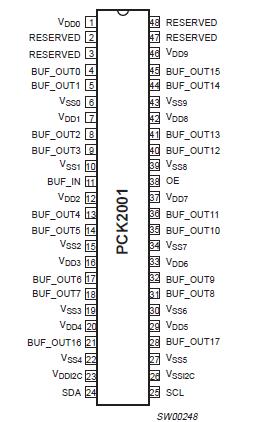PCK2001: Features: • HIGH speed, LOW noise non-inverting 118 buffer• Typically used to support four SDRAM DIMMs• Multiple VDD, VSS pins for noise reduction• 3.3V operation• Sepa...
floor Price/Ceiling Price
- Part Number:
- PCK2001
- Supply Ability:
- 5000
Price Break
- Qty
- 1~5000
- Unit Price
- Negotiable
- Processing time
- 15 Days
SeekIC Buyer Protection PLUS - newly updated for 2013!
- Escrow Protection.
- Guaranteed refunds.
- Secure payments.
- Learn more >>
Month Sales
268 Transactions
Payment Methods
All payment methods are secure and covered by SeekIC Buyer Protection PLUS.

 PCK2001 Data Sheet
PCK2001 Data Sheet







